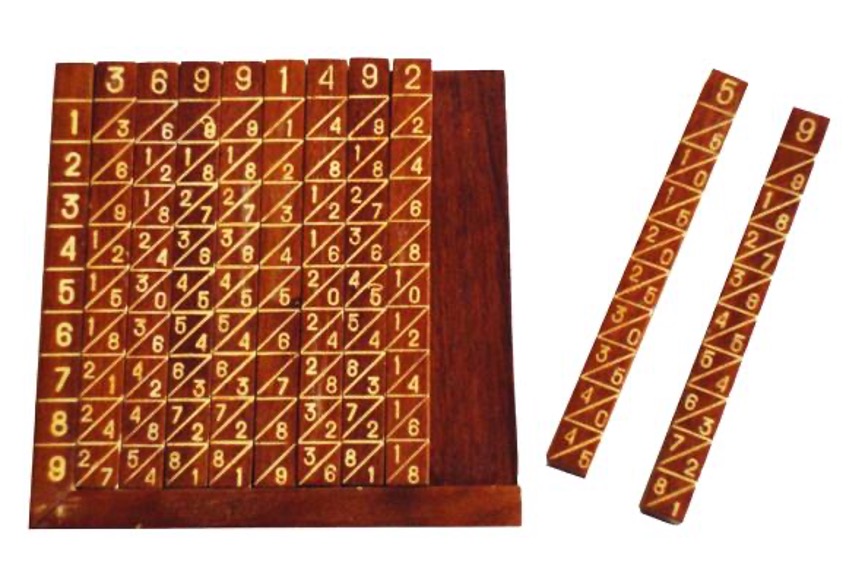NAPIER’s RODS 1617 (Replica)
Inventor
John NAPIER, Baron of Merchiston
Invention date
1617
Manufacturing date:
Unkown
Manufacturing location
England
Manufacturer
Unknown
Dimensions
L 12 W 12 H 3
Reference Number
249

History and Functionality
In 1617 John NAPIER (NEPER) Baron of Merchiston (Scotland) had the idea of presenting the Pythagorian tables on rods to make the execution of the multiplication easier. This type of instrument was in use in Europe for over two hundred years. Some of them were worn on the belt in leather cases or in wooden boxes.
A number is assigned to each side of the rods and we can find on each side all the results of the product of the assigned number by the first nine integers. Thus the rod of “2” offers successively 2, 4, 6, 8, 10, 12, 14, 16, 18 that is to say the multiplication table by 2.
Performing a multiplication involves selecting rods corresponding to the digits of the multiplicand and storing them against a frame that contains the figures of the multiplier in its vertical part.
Multiplication is performed by reading from right to left the numbers on the rods on the line corresponding to the figure of the multiplier (one must sum the digits between two diagonals of the same line).
Thus the product of 36991492 by 2 (see photo) is 7 (6+1) 3(2+1) 9 (8+1) 8 2 9 (8+1) 84.
In order to find the product of 36991492 by 23, one must achieve a reading of line 3, a reading of line 2, and then add the two numbers after having shifted by one unit to the left the number obtained on line 2.
About The Inventor
John Napier (Scotland 1550-1617) was a remarkable Scottish mathematician and theologian of the 16th century, best known for his invention of logarithms, a major advancement in the field of mathematics.
His most notable contribution to calculation technology was the creation of “Napier’s bones,” an ingenious device designed to simplify the process of multiplication and division, thereby laying the foundations for future calculating machines.
Although he was not directly involved in the development of differential and integral calculus, often associated with Newton and Leibniz, Napier’s work greatly facilitated complex computations, paving the way for future advancements in this field.
His insatiable curiosity and ingenuity have left an indelible mark in the history of mathematics and computing.

